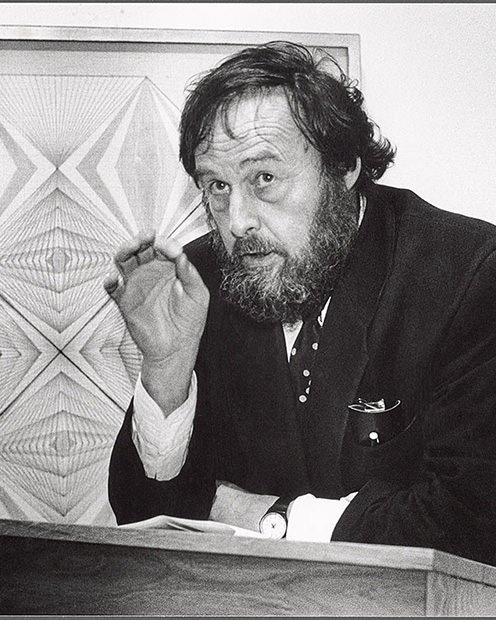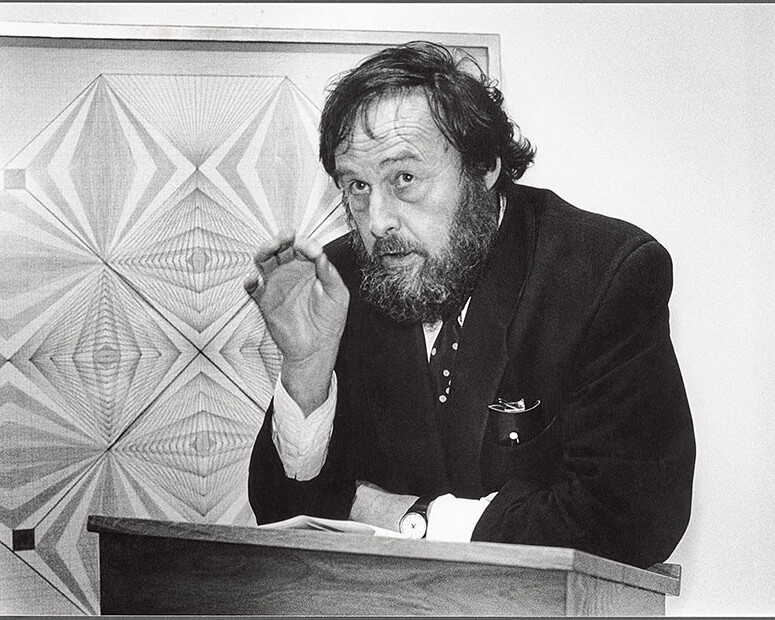Harald Szeemann: The Maverick Curator Who Redefined Art Curation
Harald Szeemann (1933-2005) was one of the most influential curators of the recent past, his work was highly complex and cannot be seen as having just a single aspect, as a result, an entire generation of curators has been inspired by his independent way of creating exhibitions and his emphatic method of presenting Contemporary Art.


Harald SzeemannHarald Szeemann (June 11, 1933 – February 18, 2005) was a ... More: The Life and Work of an Influential Curator – This article explores the pioneering career of Harald SzeemannHarald Szeemann (June 11, 1933 – February 18, 2005) was a ... More, from his early accomplishments and controversial exhibitions to his lasting impact on the art world and his concept of a Museum of Obsessions.

Harald Szeemann: Pioneering Early Career and Innovation
Harald SzeemannHarald Szeemann (June 11, 1933 – February 18, 2005) was a ... More, an influential figure in the field of art curation, was shaped by his academic background in art history, archeology, and journalism. His innovative approach to curation was largely influenced by these disciplines, leading him to challenge conventional practices and reshape the role of a curator into an art form itself.
At the young age of 28, Szeemann became the director of the Kunsthalle Bern, a position that helped establish his reputation as a visionary curator. During his tenure, he forged international collaborations with artists, introducing new perspectives and ideas into the Swiss art scene. His landmark exhibition, “Live in Your Head: When Attitudes Become Form” in 1969, however, sparked controversy due to its avant-garde approach and led to his resignation from the Kunsthalle Bern.
Transition to Independent Curator
Following his departure from the Kunsthalle Bern, Szeemann transitioned to independent curation, a move that allowed him to explore new territories in the art world. This new path gave him the freedom to organize exhibitions in unconventional settings and focus on artists and ideas that may not have received mainstream institutional support.
One of his most notable independent exhibitions was “Grandfather: A Pioneer Like Us”, a show held in his own home that featured about twelve hundred objects documenting the life and work of his paternal grandfather, Étienne. This exhibition, embodying Szeemann’s belief in curating as a transformative practice, came to symbolize curating in its purest form.
Szeemann’s Vision and Impact
Szeemann’s impact on the art world was profound. He transformed the role of the curator into that of a curator-as-artist, viewing his exhibitions as an “archive in transformation”. His curatorial work bridged the gap between past and present, showcasing the rich cultural history and artistic legacy of various regions, such as his “Visionary Belgium” exhibition.
Szeemann’s innovative approach had a rippling effect on contemporaryContemporary, mirroring the German notion of "Zeitgenosse" -... More art and exhibition-making methodologies. His curatorship of documenta 5 in Kassel in 1972 and his establishment of Aperto at the Venice BiennaleHarald Szeemann (June 11, 1933 – February 18, 2005) was a ... More in 1980 were significant milestones that reshaped the art landscape.

“Museum of Obsessions” and Sudden Death
Szeemann’s concept of a “Museum of Obsessions” was a reflection of his philosophy that exhibition-making was a deeply personal and transformative process. He saw his exhibitions as representations of this “museum”, each one a unique exploration of his artistic and curatorial obsessions.
In 2011, the Getty Research Institute acquired The Harald SzeemannHarald Szeemann (June 11, 1933 – February 18, 2005) was a ... More Archive and Library, marking a significant milestone in the Institute’s history. This acquisition ensured the preservation of Szeemann’s vast body of work and his profound impact on the field of curation. Szeemann had planned to retire in 2006, but his sudden death in 2005 cut short his illustrious career.
Legacy and Ongoing Influence
Szeemann’s legacy continues to reverberate throughout the art world. His innovative approach to curating, his transformation of the role of the curator, and his influence on avant-garde movements have left an indelible mark on the field. His work continues to inspire contemporaryContemporary, mirroring the German notion of "Zeitgenosse" -... More curators and shape exhibition practices around the world.
An exhibition in his honor, held at the Castello di Rivoli Museum of ContemporaryContemporary, mirroring the German notion of "Zeitgenosse" -... More Art in Turin, is a testament to his lasting influence. Through his pioneering work, Szeemann forever changed the way we perceive, interpret, and engage with art, leaving a unique and enduring legacy in the art world.